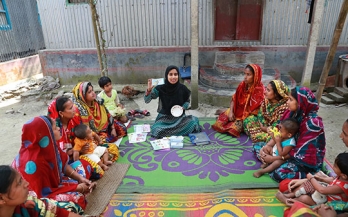The objective of this study was to assess the global prevalence and disease burden of vitamin D deficiency, and population‐based strategies to improve vitamin D status, particularly in low‐ and middle‐income countries
The purpose of this study was to develop and test a model to procure premix through a transparent and efficient process in which an adequate level of quality is guaranteed and a financial mechanism is in place to support countries or specific target groups when there are insufficient resources to cover the cost of premix.
As a highly bioavailable iron compound, sodium iron (iii) ethylenediaminetetraacetate (NaFeEDTA) has been recommended as a food additive for fortification. The objective of this study was to calculate the dosage of NaFeEDTA for fortifying complementary foods assuming different population prevalences of underweight.
The objectives of this paper are to provide information on the costs of adding different chemical forms of iron and/or other micronutrients to premix formulations, and to discuss some of the issues that should be considered regarding which micronutrients to include in the premix.
The objective of this chapter is to describe and discuss the latest advances related to the composition and delivery of fortified complementary foods products, including home and commercial fortification.
Fortification of staple foods is the cheapest, most efficient and most effective way to supply large populations with essential micronutrients. This paper reviews the case for fortification of flour supplies with iron and folic acid and concludes that it is the best way to provide daily doses of these nutrients to populations in developing countries, especially for women of child-bearing age.
This paper focuses on food fortification in two states of India and highlights the key activities needed to implement large scale food fortification programs, the challenges associated with food fortification, the feasibility of scaling up staple food fortification through commercial channels on a voluntary basis and the potential of introducing fortified foods through public funded programs.
This survey aimed to gauge the level of fortification of maize and wheat flour at the retail level compared with staple food fortification regulations in South Africa to better understand the current obstacles to effective delivery of micronutrients through flour fortification and consider approaches to strengthening the program.
This paper focuses on how micronutrient powder interventions undertook key elements of programme improvement, specifically, the use of programme theory, monitoring, process evaluation, and supportive supervision. Methods included a review of published and grey literature, interviews with key informants, and deliberations throughout the consultation process.
This paper focuses on programmatic experiences related to micronutrient powders delivery, social and behaviour change communication, and training. Methods included a review of published and grey literature, interviews with key informants, and deliberations throughout the consultation process.










